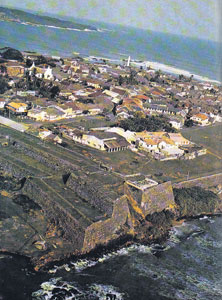Galle - the third town to gain
municipal status
It was exactly 140 years ago this week that the Municipal Council of Galle, the Southern capital was established. The date has been recorded as November 20, 1866.
Galle owes its glory to its harbour - the country's first - since the 14th century. It became the island's chief port of call due to its strategic position in relation to the sea routes. Traders from many parts of the world landed in Galle with their merchandise and it became a trading centre. Bartering of goods was popular at the time and foreign traders were keen to get spice from Ceylon in exchange for their goods.
In 1505 a Portuguese fleet of vessels under the command of Don Lourenco de Almeida bound for the Maldives was driven off their course by winds and landed in Galle. The Portuguese gradually occupied the maritime provinces, but it was not until 1588 that they fortified Galle. That was following the attack by King Rajasinghe I of Sitawaka on Colombo.
The main landmark of Galle is the Fort, which was built by the Dutch in 1663 on a 90-acre block of land. It was considerably strengthened during the administration of Dutch Governor Petrus Vuyst (1726-29). The Ramparts and the Bastions can be seen even today just as they existed during the time of the Dutch.
Most of the buildings in the Fort are of Dutch origin. They are solidly built and are spacious with deep verandahs supported by slender wooden or big rounded pillars. The massive doors usually were in four pieces with iron fittings. There were courtyards at the back of the buildings. The interiors are cool and spacious with thick walls and high roofs.
On February 16, 1796, the Dutch surrendered Colombo to the British. Shortly before this, Galle and other Dutch possessions of the Dutch were ceded to the British.
Galle gained municipal status after Colombo and Kandy. |

